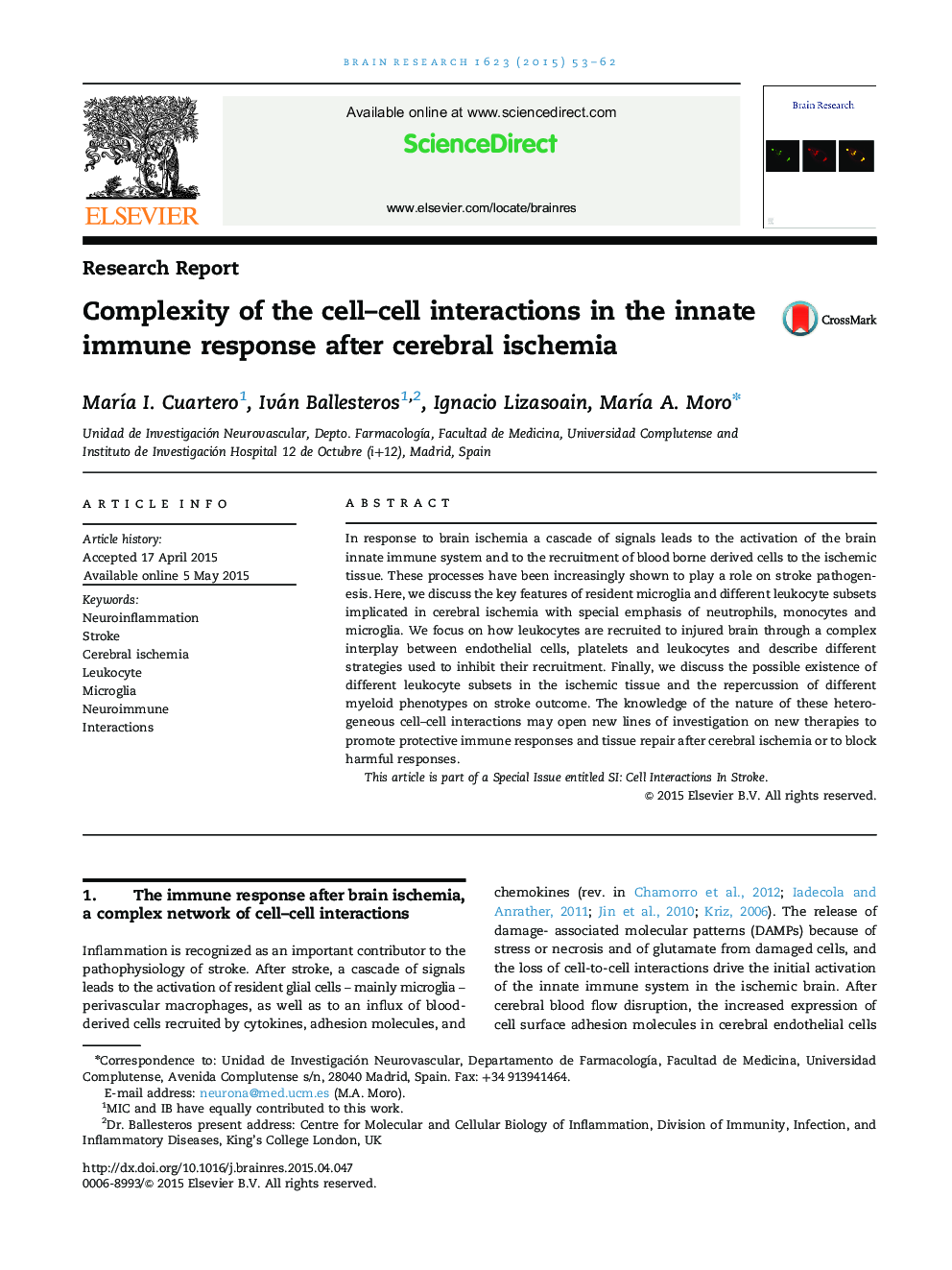| کد مقاله | کد نشریه | سال انتشار | مقاله انگلیسی | نسخه تمام متن |
|---|---|---|---|---|
| 4323733 | 1613816 | 2015 | 10 صفحه PDF | دانلود رایگان |
• Blood or resident myeloid cells may play beneficial or deleterious roles.
• Interactions with endothelial cells and platelets mediate brain infiltration.
• Diverse phenotypes of leukocyte subsets have different impact on stroke outcome.
• M1/M2 markers and inflammatory N1 and resolving N2 neutrophils have been identified.
• Whether M1/M2 dichotomy serves to characterize microglia functional state is unclear.
In response to brain ischemia a cascade of signals leads to the activation of the brain innate immune system and to the recruitment of blood borne derived cells to the ischemic tissue. These processes have been increasingly shown to play a role on stroke pathogenesis. Here, we discuss the key features of resident microglia and different leukocyte subsets implicated in cerebral ischemia with special emphasis of neutrophils, monocytes and microglia. We focus on how leukocytes are recruited to injured brain through a complex interplay between endothelial cells, platelets and leukocytes and describe different strategies used to inhibit their recruitment. Finally, we discuss the possible existence of different leukocyte subsets in the ischemic tissue and the repercussion of different myeloid phenotypes on stroke outcome. The knowledge of the nature of these heterogeneous cell–cell interactions may open new lines of investigation on new therapies to promote protective immune responses and tissue repair after cerebral ischemia or to block harmful responses.This article is part of a Special Issue entitled SI: Cell Interactions In Stroke.
Journal: Brain Research - Volume 1623, 14 October 2015, Pages 53–62
